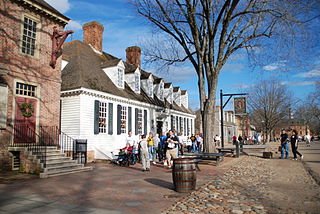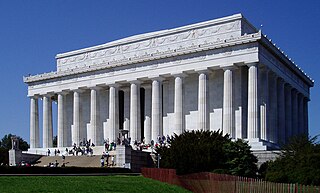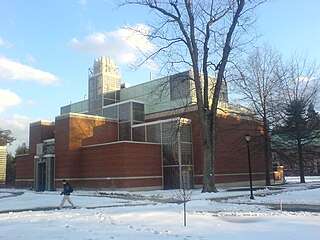Related Research Articles

Gordon–Conwell Theological Seminary (GCTS) is an evangelical seminary with its main campus in Hamilton, Massachusetts, and three other campuses in Boston, Massachusetts; Charlotte, North Carolina; and Jacksonville, Florida. According to the Association of Theological Schools, Gordon-Conwell ranks as one of the largest evangelical seminaries in North America in terms of total number of full-time students enrolled.
Olin College of Engineering, officially Franklin W. Olin College of Engineering, is a private college focused on engineering and located in Needham, Massachusetts. Olin College is noted in the engineering community for its relatively recent founding, small size, project-based curriculum, and large endowment funded primarily by the defunct F. W. Olin Foundation. The college covers half of each admitted student's tuition through the Olin Scholarship. Olin College is ranked among the top undergraduate engineering programs within the United States.

Needham is a town in Norfolk County, Massachusetts. A suburb of Boston, its population was 32,091 at the 2020 U.S. Census. It is home of Olin College.

Colonial Williamsburg is a living-history museum and private foundation presenting a part of the historic district in the city of Williamsburg, Virginia, United States. The Colonial Williamsburg Foundation has 7300 employees at this location and globally. There are 37 companies in The Colonial Williamsburg Foundation corporate family.

Miss Porter's School (MPS) is an elite American private college preparatory school for girls founded in 1843, and located in Farmington, Connecticut. The school draws students from 21 states, 31 countries, and 17 countries and international students comprised 14% as of the 2017–2018 year. The average class size was 10 students in 2017.

Henry Bacon was an American Beaux-Arts architect who is best remembered for the Lincoln Memorial in Washington, D.C., which was his final project.

Rollins College is a private college in Winter Park, Florida. It was founded in November 1885 and has about 30 undergraduate majors and several graduate programs. It is Florida's fourth oldest post-secondary institution.

Collegiate Gothic is an architectural style subgenre of Gothic Revival architecture, popular in the late-19th and early-20th centuries for college and high school buildings in the United States and Canada, and to a certain extent Europe. A form of historicist architecture, it took its inspiration from English Tudor and Gothic buildings. It has returned in the 21st century in the form of prominent new buildings at schools and universities including Princeton and Yale.
Arthur Asahel Shurcliff (1870–1957) was a noted American landscape architect. Born Arthur Asahel Shurtleff, he changed his last name in 1930 in order, he said, to conform to the "ancient spelling of the family name". After over 30 years of success as a practicing landscape architect and town planner, in 1928 he was called upon by John D. Rockefeller Jr., and the Boston architectural firm of Perry, Shaw & Hepburn to serve as Chief Landscape Architect for the restoration and recreation of the gardens, landscape, and town planning of Colonial Williamsburg, Virginia, a position he held until his retirement in 1941. It was the largest and most important commission of his career.

The Wren Building is the signature building of the College of William & Mary in Williamsburg, Virginia. Along with the Brafferton and President's House, these buildings form the College's Ancient Campus. With a construction history dating to 1695, it is the oldest academic building in continuous use in the United States and among the oldest buildings in Virginia. It was designated a National Historic Landmark in 1960.

Franklin Walter Olin was the founder of the Olin Corporation and the Franklin W. Olin Foundation. He was born in Woodford, Vermont, and his father built mills and waterwheels.
Olin may refer to:
LeMessurier Consultants is a Boston, Massachusetts firm, founded by William LeMessurier in 1961. It provides engineering support services to architects and construction firms. They focus on advanced structural techniques and impacts to construction materials. They are known for their modular construction techniques including the Mah-LeMessurier System for precast concrete in high-rise housing, the Staggered Truss System for high-rise steel structures, and the tuned mass damper used to reduce tall building motion. One of the best known uses of the damper is the John Hancock Tower in Boston. In addition to new construction, they also work with retrofitting buildings and historic preservation.
This is an incomplete list of historic properties and districts at United States colleges and universities that are listed on the National Register of Historic Places (NRHP). This includes National Historic Landmarks (NHLs) and other National Register of Historic Places listings. It includes listings at current and former educational institutions.

John Edwin Pomfret was an American academic and administrator who served as the director of the Henry E. Huntington Library and Art Gallery and the twentieth president of the College of William & Mary.

The Seeley G. Mudd Chemistry Building was a chemistry laboratory and classroom building on the campus of Vassar College in the town of Poughkeepsie, New York. The 42,000-square-foot (3,900 m2) postmodern building stood on the north end of a cluster of other science buildings on the site of the school's first chemistry laboratory. It was completed in 1984 at a cost of $7.2 million after the college received money from a fund bequeathed to it in the will of California cardiologist and professor Seeley G. Mudd. The structure replaced Sanders Hall of Chemistry and included elements designed to be energy efficient, notably a large wall of glass blocks that designers hoped would passively heat the building. Reviews of the structure were positive when it opened with critics praising the way its form complemented nearby older buildings. By 2015, many aspects of the building had been evaluated as being in Fair or Poor condition and the building was demolished in April 2016 as part of the Science Center project, later replaced with an open green space.

Bibliography of early American publishers and printers is a selection of books, journals and other publications devoted to these topics covering their careers and other activities before, during and just after the American Revolution. Various works that are not primarily devoted to those topics, but whose content devotes itself to them in significant measure, are sometimes included here also. Works about Benjamin Franklin, a famous printer and publisher, among other things, are too numerous to list in this bibliography, can be found at Bibliography of Benjamin Franklin, and are generally not included here unless they are greatly devoted to Franklin's printing career. Single accounts of printers and publishers that occur in encyclopedia articles are neither included here.

William G. Perry (1883–1975) was an American architect in practice in Boston from 1915 to 1974. In 1923 Perry was a cofounder of the architectural firm now known as Perry Dean Rogers Architects and is best known for the restoration of Colonial Williamsburg, beginning in 1927.
References
- 1 2 3 4 Goodman, Ellen (December 10, 1967). "Elegance in Dedham". Boston Globe. p. A 21.[ permanent dead link ]
- ↑ Fenton, John H. (September 18, 1954). "Steel Industry Dedicates Replica As 'Shrine to Private Enterprise'". The New York Times.
- ↑ "History 21: New Campus: The Move". Archived from the original on 2015-09-19. Retrieved 2014-11-25.
- ↑ Gaskie, Margaret (March 1986). "Organic chemistry". Architectural Record . 174 (3): 137. ISSN 0003-858X.